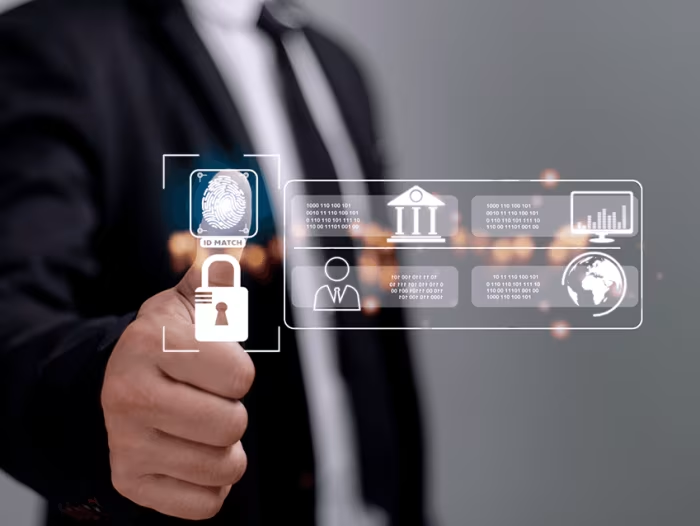Resource / Online Journal
When Should an Organization Use Identity Governance and Administration (IGA)?
IGA helps protect and secure a growing organization by safeguarding its ecosystem against potential security incidents. Use this guide to assess whether your organization needs an Identity Governance and Administration (IGA) solution.
Published on Apr 21, 2025

What is IGA (Identity Governance and Administration)?
Identity Governance and Administration (IGA) has emerged as a cornerstone of modern cybersecurity. IGA is a strategic solution designed to manage digital identities and regulate user access across multiple systems in an organized, policy-driven manner. By managing user access to the right access privileges to sensitive data, IGA helps organizations strengthen their security posture and ensure regulatory compliance.
Operating at the intersection of identity and access management (IAM) and cybersecurity, IGA offers a more holistic approach to managing user identities and their access rights. It’s particularly valuable for organizations aiming to minimize security risks, improve risk management, and maintain operational efficiency across increasingly complex IT environments.
IGA and IAM
While IAM solutions focus on authenticating users and granting access to specific systems, IGA adds a deeper control. IGA offers a powerful combination that enforces role-based access control, monitors user behavior, and automates access decisions.
Organizations can use IGA to manage access requests more effectively, making sure that every user is granted access according to their roles. This reduces the attack surface and protects critical systems from internal and external threats. IGA also automates the creation and management of user accounts, ensuring that permissions are aligned with business roles and adjusted dynamically when roles change.
A key benefit of combining IAM and IGA is the ability to detect unusual access patterns in real time. Both can create a comprehensive framework for access management, tailored to the demands of complex ecosystems.
Key Features of IGA Solutions
Modern IGA solutions provide a range of powerful features that centralize and automate the management of user access. It simplifies both identity administration and compliance, reducing the need for manual oversight while increasing visibility and control.
One essential feature is self-service password management. For example, it allows users to reset or recover their passwords securely without depending on the IT help desk. IGA improves the user experience and significantly reduces administrative overhead. If an employee joins or leaves the company, it ensures that access is granted or revoked, thus, eliminating the need for repetitive and manual tasks.
Access governance plays a key role in maintaining continuous oversight of permissions across a complex chain in the organization. With real-time managing capabilities, organizations can monitor who has access to what, verify user access, and ensure that all access aligns with internal policies and external regulations. Tools such as access certification help organizations periodically review and validate access rights, ensuring that users don’t retain outdated or unnecessary privileges.
The least privilege model in IGA ensures that users only have access to the data and systems required for their roles. By limiting exposure, organizations reduce their vulnerability to security incidents, particularly from internal actors or accidental misuse.
When Should an Organization Use IGA?
When companies scale and their digital identity chains become more complex, the need for robust identity governance becomes essential. IGA, while managing identities manually, becomes inefficient when the number of user identities and access relationships starts to burden IT and security teams.
Signs that your organization need IGA include a growing complex identity management, increasing pressure to maintain compliance, and the need to support diverse teams across various departments with tailored access requirements. Here comes IGA, it provides centralized control and visibility into every identity, ensuring that access to sensitive data is always secured.
Moreover, companies facing regulatory obligations like HIPAA, SOX, or GDPR will benefit from IGA’s built-in compliance reporting features, which simplify audits and reduce the risk of non-compliance penalties.
Best Practices for Implementing IGA
One of the first steps is selecting a solution provider that offers customized IGA solutions tailored to the unique needs of your enterprise. Automating access provisioning and review processes is essential for eliminating repetitive tasks and ensuring real-time reception. Automation ensures that no access is granted or retained without proper review, decreasing vulnerabilities and keeping your systems safeguarded.
Integration becomes easier with pre-existing IAM. IAM is important for a seamless and unified identity management experience. Together, IAM and IGA create a smooth, scalable system that adapts to organizational growth without sacrificing anything.
Maintaining transparency into user access rights and activities is key. Organizations should routinely audit permissions and monitor for anomalies in access behavior, which could signal a threat or policy violation. By continuously analyzing access patterns, IGA enables proactive enforcement of policies and early detection of potential threats.
Conclusion
Identity Governance Administration is a next step to maintain the security of your developing company from any threats. While digital operations are growing in scale and complexity, the ability to manage and secure user access becomes a critical success factor.
IGA empowers organizations to maintain security, streamline access provisioning, and ensure accountability across all user accounts. It gives identity workflows, enforcing access controls, and enhanced visibility into the entire identity ecosystem. IGA helps organizations stay compliant, reduce risks, and operate with confidence.
Recommended articles


Benefits of Identity Governance and Administration (IGA)
Take Your Identity Strategy
to the Next Level
Strengthen your organization's digital identity for a secure and worry-free tomorrow. Kickstart the journey with a complimentary consultation to explore personalized solutions.